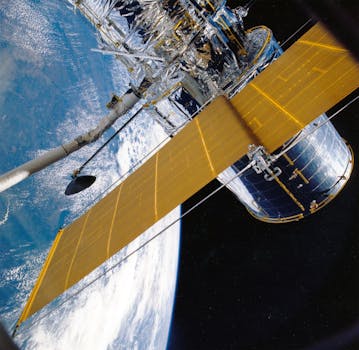GEO satellites, or Geostationary satellites, are a type of satellite that orbits the Earth at an altitude of approximately 36,000 kilometers, remaining stationary relative to a fixed point on the equator. The focus keyword GEO satellites is essential to understanding the technology and its applications. The unique characteristics of GEO satellites make them ideal for a variety of purposes, including telecommunications, weather forecasting, and navigation.
The first GEO satellite was launched in 1963, and since then, thousands of satellites have been launched into geostationary orbit. These satellites are used for a wide range of applications, including television broadcasting, mobile communications, and internet connectivity. The technology behind GEO satellites is complex, involving advanced materials, propulsion systems, and communication equipment.
One of the primary advantages of GEO satellites is their ability to provide global coverage. Because they remain stationary relative to a fixed point on the equator, they can transmit signals to a wide area, making them ideal for applications such as television broadcasting and mobile communications. Additionally, GEO satellites can be used to provide internet connectivity to remote areas, where traditional infrastructure may not be available.
Applications of GEO Satellites
GEO satellites have a wide range of applications, including telecommunications, weather forecasting, and navigation. In the field of telecommunications, GEO satellites are used to provide mobile communications, television broadcasting, and internet connectivity. They are also used for navigation, providing location information and timing signals for GPS and other navigation systems.
In addition to these applications, GEO satellites are also used for weather forecasting, providing images and data on cloud patterns, atmospheric conditions, and other weather-related phenomena. They are also used for scientific research, providing data on the Earth’s climate, geology, and natural resources.
Technology Behind GEO Satellites
The technology behind GEO satellites is complex and involves advanced materials, propulsion systems, and communication equipment. The satellites are typically made of lightweight materials, such as aluminum and carbon fiber, and are equipped with advanced propulsion systems, such as ion engines and Hall effect thrusters.
The communication equipment on GEO satellites includes transponders, antennas, and transceivers. The transponders receive signals from Earth stations and retransmit them to other parts of the world. The antennas are used to transmit and receive signals, while the transceivers are used to amplify and process the signals.
Challenges and Future Developments
Despite the many advantages of GEO satellites, there are also several challenges associated with their use. One of the primary challenges is the risk of satellite collisions, which can result in significant damage and disruption to communication services. Additionally, the increasing number of satellites in geostationary orbit is creating concerns about space debris and the potential for collisions.
To address these challenges, researchers and engineers are developing new technologies and techniques for satellite design, launch, and operation. For example, new materials and propulsion systems are being developed to improve the efficiency and sustainability of satellites. Additionally, new technologies, such as satellite-based internet connectivity, are being developed to provide faster and more reliable communication services.
In conclusion, GEO satellites are a crucial part of modern telecommunications, providing global coverage and enabling a wide range of applications. The technology behind GEO satellites is complex, involving advanced materials, propulsion systems, and communication equipment. As the demand for satellite-based services continues to grow, researchers and engineers are developing new technologies and techniques to improve the efficiency, sustainability, and reliability of GEO satellites.
